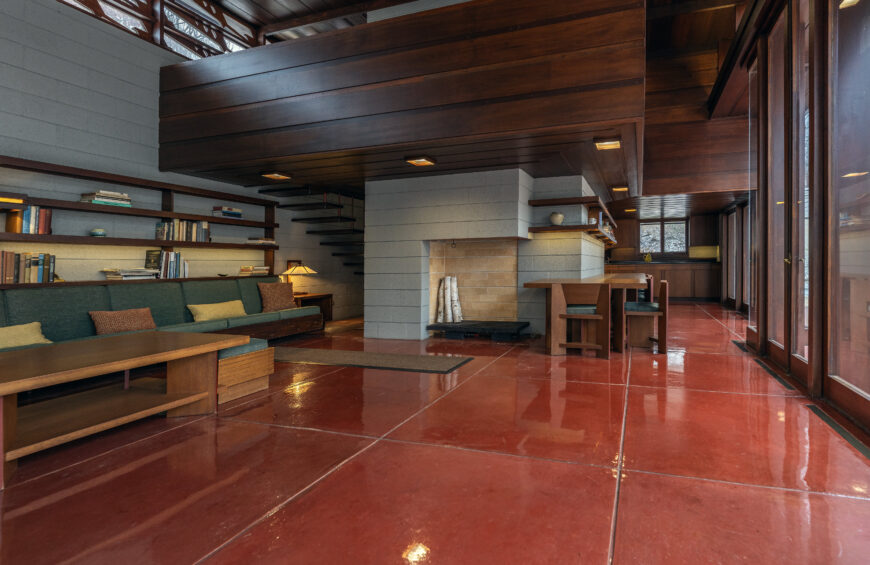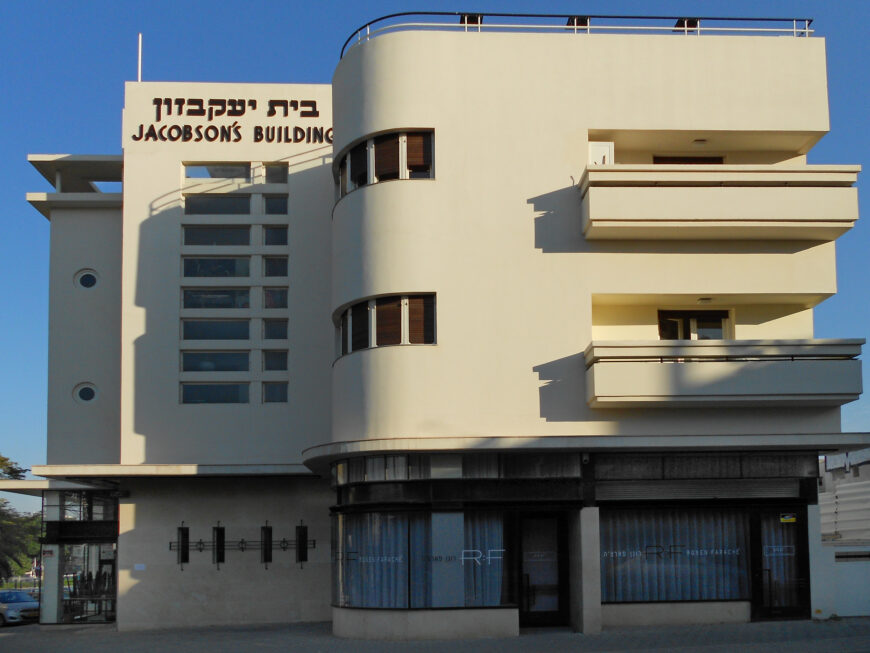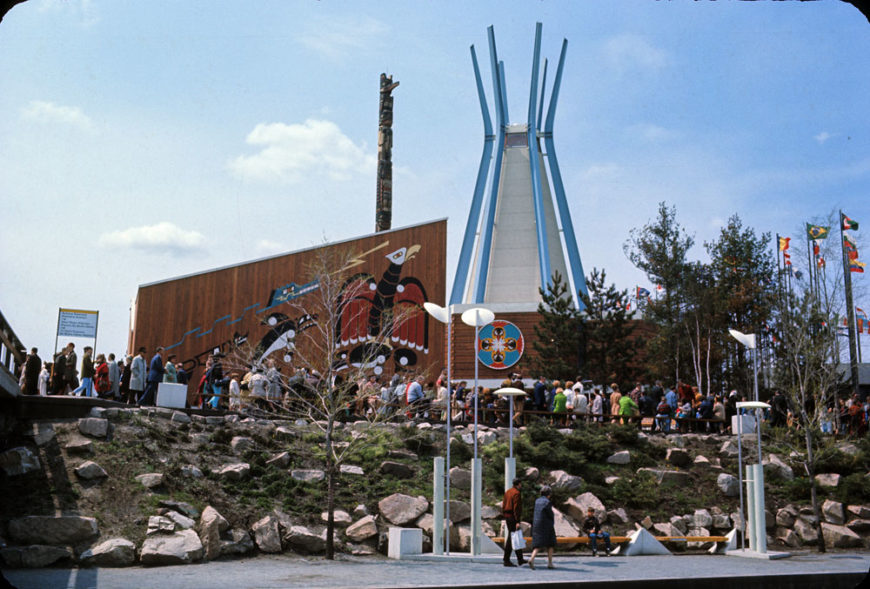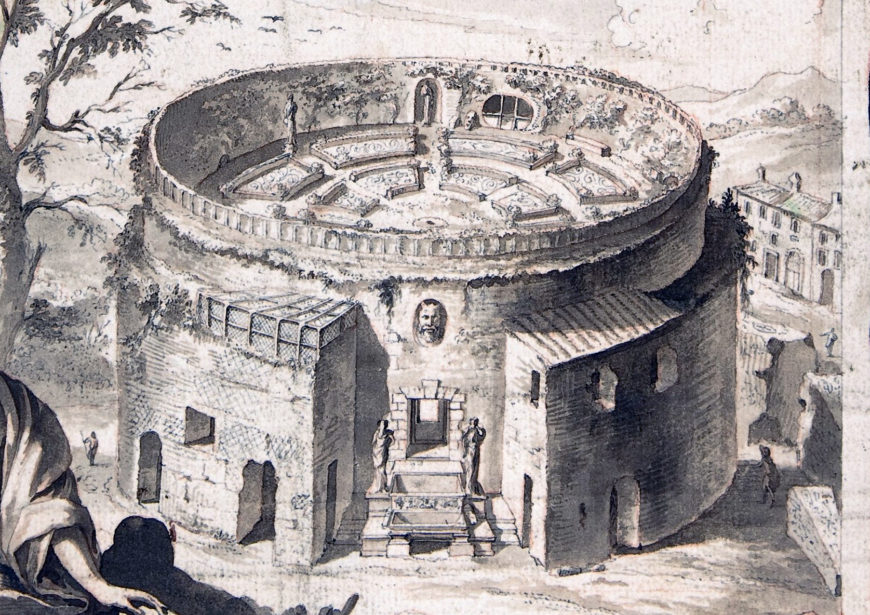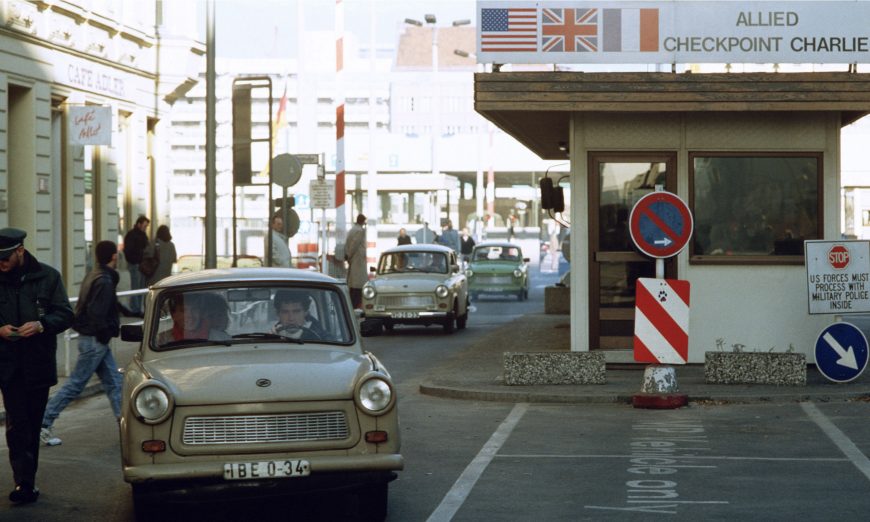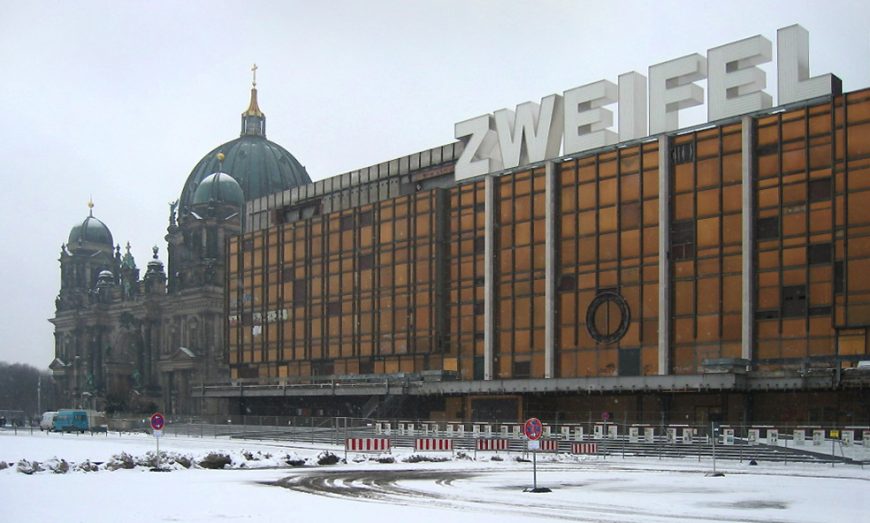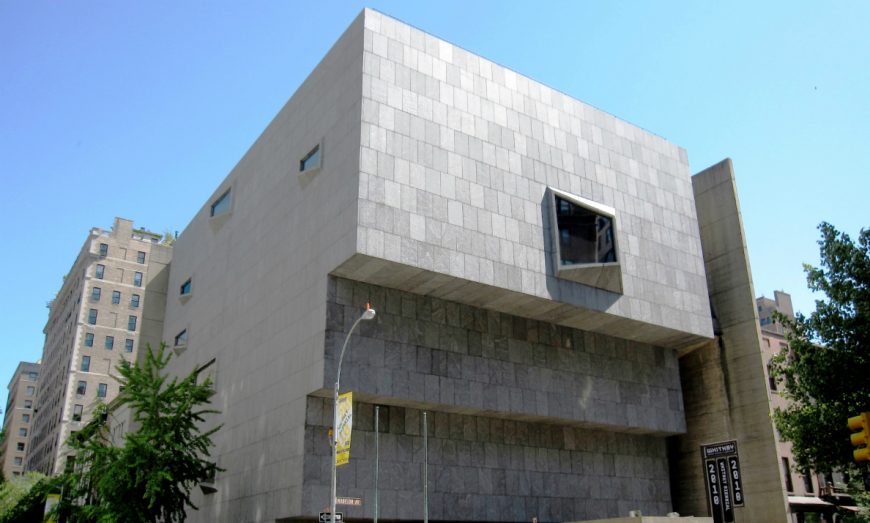A powerful accumulation of names is inscribed on slabs of reflective stone that cuts into the earth on the Mall.
Maya Lin, Vietnam Veterans Memorial, 1982, granite, 2 acres within Constitution Gardens (National Mall, Washington, D.C.)
[0:00] [music]
Dr. Steven Zucker: [0:05] We’re in Washington, D.C. on the Mall,at the Vietnam Veteran’s Memorial.
Dr. Beth Harris: [0:10] Which is situated right between the Washington Monument and Lincoln Memorial. Maya Lin, the architect of the memorial, thought about uniting the memorial to the nation’s past, bringing together the past and the present.
Dr. Zucker: [0:25] It’s this very long series of slabs of stone, this highly reflective black granite, that actually points to both of those monuments.
Dr. Harris: [0:35] Although the architect didn’t like to refer to these as walls, in a way they are walls, they’re very thin, sunk into the ground and inscribed with the names of the servicemen who died in the Vietnam War.
Dr. Zucker: [0:47] Now, there are more than 58,000 names. In fact, more names are being added. It is overwhelming in the density of names. What happens as you walk down this path, you sink into the earth. The earth opens up and reveals these names.
[1:05] Because the surface of the stone is so reflective, it becomes a mirror. Really, all that seems to have substance is the rougher surface of the names themselves.
Dr. Harris: [1:17] Maya Lin’s idea was that it was the names that were the reality, the substance of the monument, and that the reflectivity of the granite opened up into another world that we could not enter, but which was there for us to see.
Dr. Zucker: [1:33] She describes, when she first visited the site, that she wanted to reveal that edge.
Dr. Harris: [1:39] In fact, she said “I had a simple impulse to cut into the earth. I imagined taking a knife and cutting into the earth, opening it up, an initial violence and pain that in time would heal.” She writes that the experience of the monument would help people to come to terms with the death of their loved ones.
Dr. Zucker: [1:57] There is a real journey involved here. You walk down in, you find the name of your loved one embedded within the chronological sequence of the death of all of these soldiers. Then you walk back out.
Dr. Harris: [2:09] That’s right. In the center, the chronology begins and goes down toward the right as we’re facing the wall, then picks up again on the low edge of the left side and moves toward the center again. As we move down the center, the path widens and the granite rises more that 10 feet about us.
Dr. Zucker: [2:28] The names become a symbol of this person multiplied more than 58,000 times, but even though you’ve got that abstraction, you also have this very concrete reality. You have this place for family to come, to gather, to reflect on that name.
Dr. Harris: [2:45] Maya Lin talks about the name as an abstraction that, in fact, means more to family and loved ones than a picture. The picture represents someone at a particular time, at a particular place, at one moment in their lives, whereas a name might recall everything about that person.
Dr. Zucker: [3:05] There is this powerful accumulation of all of the names. As you descend, as you walk into the densest middle of the monument, it becomes absolutely overwhelming.
Dr. Harris: [3:14] It’s a very different experience than most previous war memorials.
[3:19] When we think about the history of war memorials, we often think about memorials to military heroes like the monument to Lord Nelson in Trafalgar Square, or we might think about the Shaw Memorial by Augustus Saint-Gaudens in the National Gallery, where you have a hero leading an anonymous army with an allegorical figure representing peace and death.
[3:41] This combination of allegory and heroism that’s usually in memorials and is completely absent here.
Dr. Zucker: [3:48] How can one create a meaningful monument in the late 20th century? What does it mean to strip away all of the representational form? What does it mean to create something so self-consciously abstract and yet also so powerful and so meaningful?
Dr. Harris: [4:03] Evidently, the committee that judged this decided that this abstraction would be best, and it’s interesting to think about how the committee didn’t know who Maya Lin was.
[4:13] There were 1,400 entries, completely anonymous. Maya Lin at that point was an undergraduate at Yale. She was an architecture student. She’s an Asian American. It’s interesting to think about what might have happened had they known who this application was from.
Dr. Zucker: [4:29] Once her identity had been revealed, there was real backlash and racism. There was backlash also about the abstraction. Ultimately, that was resolved by a much more naturalistic sculpture adjacent to the main memorial.
Dr. Harris: [4:41] One that shows soldiers in a very naturalistic way, three-dimensionally, which is also powerful, but in a way that feels much more public and far less intimate.
Dr. Zucker: [4:50] Well, Maya Lin was brilliant, I think, in creating a public space and yet tremendous intimacy. We can feel those names inscribed. The act of reading is to come close, to internalize those names. Maya Lin’s Vietnam Memorial is one of the most successful memorials in the nation.
Dr. Harris: [5:09] Apparently, one of the most visited monuments in Washington, D.C. In an article that was published much later, writing about her ideas for the monument, Maya Lin said, “It would be an interface between our world and the quieter, darker, more peaceful world beyond. I chose black granite in order to make the surface reflective and peaceful.
[0:00]
“[5:30] I never looked at the memorial as a wall, an object, but as an edge to the earth, an opened side. The mirrored effect would double the size of the park, creating two worlds, one we are part of and one we cannot enter.”
Dr. Zucker: [5:32] Even that black granite created controversy. She also talked about how she couldn’t spec granite that came from Canada or from Sweden, two countries that had really good-quality black granite, because there was too much political baggage. Draft dodgers had gone to both of those countries.
Dr. Harris: [6:01] One opponent of her design said, “One needs no artistic education to see this memorial designed for what it is, a black scar in a hole, hidden as if out of shame.” Now, this is very different than what Maya Lin intended for the wall.
[6:16] She specifically took an apolitical approach and wanted the design to be about those veterans who had sacrificed their lives and not about the political controversy at all. Not about whether the war was something shameful or something honorable.
Dr. Zucker: [6:32] The country had not only fought the war, but then fought itself over the meaning of the war. Maya Lin was very wise in sidestepping that and putting to the fore, simply, the names, the numerical power of all of those fallen.
Dr. Harris: [6:48] She wrote, “The wall dematerializes as a form and allows the names to become the object, pure and reflective surfaces that would allow visitors the chance to see themselves with the names.”
[7:01] [music]


